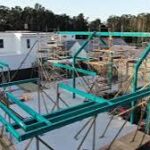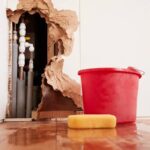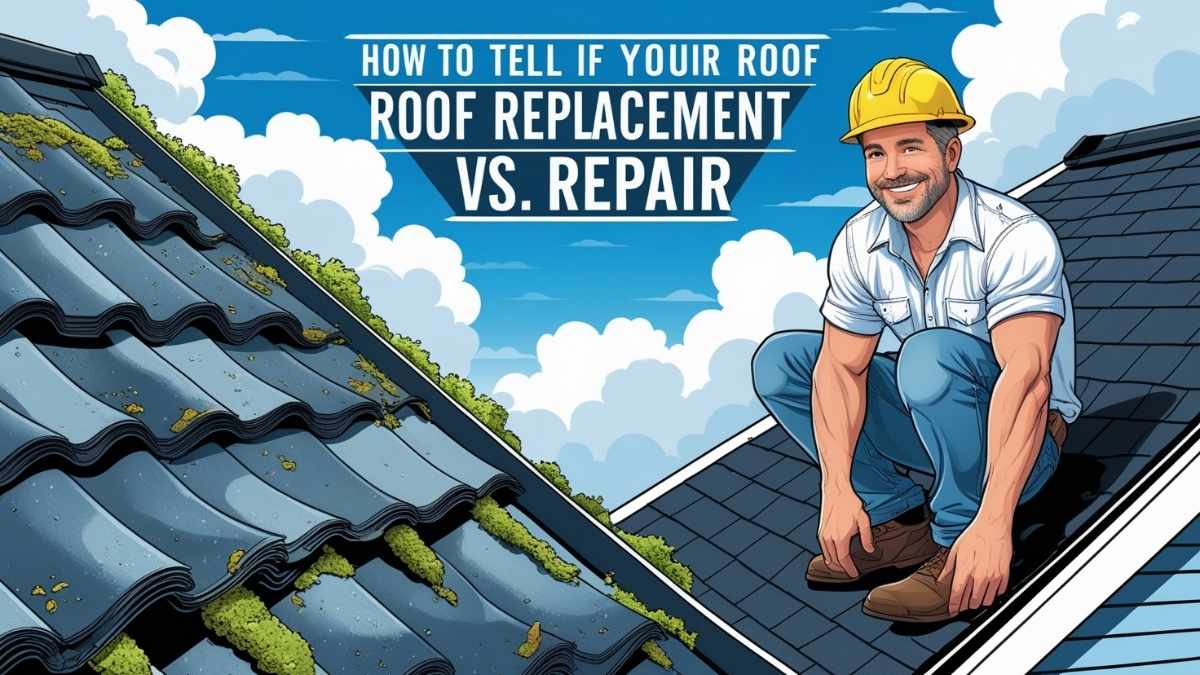Overview
A roof is one of the most critical parts of your home’s structure, acting as a shield against rain, wind, sunlight, and other elements. Over time, even the most durable roofs can show signs of damage or wear. The challenge many homeowners face is knowing when a roof issue requires a complete replacement or a timely repair. Making the wrong decision can lead to recurring costs, further damage, or unnecessary expenses. We will explore the key indicators that can help you determine whether your roof needs repairs or if a full roof replacement in Dallas is the smarter choice for long-term security and investment.
Signs That Help You Decide Between Roof Repair and Replacement
- Extent and Age of the Damage
One of the first considerations when assessing your roof is the extent of the damage and how old the roof is. A repair is likely sufficient if your roof is relatively new—under 10 years old—and the damage appears isolated, such as a few missing shingles or a small leak. Newer roofs still have structural integrity; patching up problem areas can extend their service life. However, you should be more cautious if your roof is older, especially approaching or past the 20-year mark. Aging roofs often hide deeper issues like rotting wood or poor insulation.
Furthermore, if the damage is widespread, like multiple leaks, cracked shingles all over, or sagging areas, this often means the roofing system as a whole is failing. In those cases, investing in repairs could be like applying a temporary bandage to a deeper problem, which might cost more. Therefore, consider the damage’s age and spread as your first clue.
- Energy Efficiency and Indoor Comfort
A lesser-known sign that your roof may need replacement rather than repair is a sudden increase in energy bills or discomfort inside your home. Your roof plays a vital role in regulating indoor temperatures by providing insulation. If you notice that your HVAC system is running longer than usual or that certain rooms are consistently hotter or colder, your roof might not be performing its role effectively anymore. This is especially true for older roofs with deteriorated insulation or unseen water damage.
While minor insulation issues can sometimes be addressed through targeted repairs, consistent inefficiency is a red flag. It suggests that the roofing materials, decking, or ventilation systems are no longer functional. In such cases, replacing the roof improves comfort and enhances energy efficiency, which can lead to long-term savings. Therefore, energy issues are not just HVAC problems—they can be critical indicators of your roof’s health.
- Visual Signs and Structural Integrity
If you’re not paying attention, your roof may send out clear visual signals that are easy to overlook. Start with an exterior inspection. If you see curling, buckling, or missing shingles, it could indicate aging or water damage underneath. Moss and algae growth suggest trapped moisture, which can break down the roofing materials over time. Cracked flashing or gaps around vents and chimneys are other signs of trouble. But the inspection shouldn’t stop there. Head inside your attic or top floor and look for water stains, dark patches, or sunlight filtering through.
These are telltale signs of leaks and possibly rotting support structures. Minor leaks can sometimes be fixed, but if these signs are extensive or you notice sagging in your roofline, that’s a significant warning. A structurally unsound roof is more than a leak issue—it’s a safety hazard. In such cases, a full replacement is usually necessary to restore the roof’s integrity.
- Frequency of Repairs and Long-Term Value
Another factor to evaluate is how often you’ve had to make repairs in recent years. If you call for roofing services every few months, even for minor fixes, that indicates that the system is failing. Continual patchwork repairs might seem cheaper at first, but over time, the accumulated costs can far surpass what a full roof replacement would have cost. Also, repeatedly repairing the same sections can lead to inconsistencies in roofing materials and aesthetics, which may affect your home’s curb appeal and resale value.
Think of it like an old car that keeps breaking down—there comes a point when replacing the entire system is more sensible than continuing to throw money at temporary fixes. If you’re facing repeated leaks, shingle issues, or flashing failures, it might be time to consider a replacement not just for function, but also for peace of mind and long-term savings.
Deciding between roof repair and replacement isn’t always straightforward, but you can make a smart, informed choice with the right information and a careful assessment of your roof’s condition. Age, extent of damage, energy efficiency, structural signs, frequency of previous repairs, and even recent weather events all play crucial roles in that decision. A repair can be cost-effective if the damage is isolated and your roof is relatively young. On the other hand, consistent problems, safety concerns, or widespread wear usually signal that a full replacement is a better long-term investment. Taking a proactive approach will save you money over time and protect your home and ensure your family’s safety. Understanding the difference can lead to greater peace of mind and smarter homeownership, whether it’s a small patch job or a brand-new roof.











